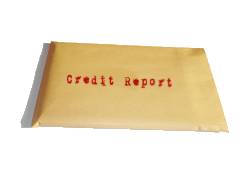What is the most commonly misunderstood aspect of every American’s life? I’ll give you a hint, it’s not the opposite sex; it’s their credit report. And rightfully so, the credit bureaus don’t exactly make their modus operandi public. In fact, the actual formulas used to calculate your credit report are closely guarded secrets of each of the three credit reporting agencies. So, no one really has a set of exact guidelines that outline how different things affect your credit; instead, we have three methods of figuring out how your credit score is calculated. The first is a set of best practices that have been acquired over time simply through trial and error; these aren’t perfect and are the source of much of the bad advice going around about credit scores. Secondly, the credit bureaus release general tips that help us increase our understanding of the factors affecting your credit score; these are just tips and don’t define the extent to which certain actions will affect your credit. And, finally, there is something called The Fair Credit Reporting Act (”FCRA”), which establishes certain limitations on the length of time negative items may be reported on your credit report. Now, on to the three steps to remove collections from your credit report:
Credit reportStep 1: Dispute the collection charges.
 Write a letter to the reporting company (i.e. Equifax, Transunion or Experian) referencing the account in dispute and include supporting documentation (i.e. Copies of receipts for payment or copies of cleared checks).
Write a letter to the reporting company (i.e. Equifax, Transunion or Experian) referencing the account in dispute and include supporting documentation (i.e. Copies of receipts for payment or copies of cleared checks).
The reporting company generally has 30 days to review the dispute and notify the original company that filed the collection. The original company (i.e. Your credit card company, etc.) will then conduct an investigation to determine the validity of the dispute. If the original company finds that the collection was, in fact, reported in error, it must notify all three credit bureaus so they can correct the information in your file. At this point you should request the credit bureau to supply a notice of any corrections to anyone who received your report within the past six months (or 2 years for employment purposes). If the investigation does not resolve your dispute, you should ask that a copy of the dispute be included in your file and in future reports.
Step 2: Pay off the Collection
If you’re looking to get a mortgage, almost all lenders will require that any outstanding collections be paid off before the loan funds or be included in the loan. So, if you’ve disputed the collection and it wasn’t removed from your report, you’ll need to pay it off before you take out a mortgage or refinance. Even if you pay the collection off, however, it will still remain on your report for some time (see step 3 for the exact length of time a collection will remain on your credit report).
Step 3: Wait until the collection drops off your report
That’s right, even unpaid items will drop off of your credit report, but not for 7 years. What does this mean? Well, unless the collection was found to be reported in error, that collection will remain on your report for 7 years from the date it was first reported no matter what – even if you pay it off. I’ve read a lot of bad information on the internet about this. A lot of “experts” seem to think that the collection will remain on your report for 7 years after the date of the last activity, meaning that if the collection was first reported in 2004 and you pay it off in 2007, it won’t drop off of your report until 2014 (2007 + 7 years). This simply isn’t true; the Fair Credit Reporting Act protects you from this and states that collections must be removed from your report 7 years after the date the collection was first reported.
Tricks of the Trade
If you have a collection on your report with a zero balance, dispute it. As I explained above, the bureaus have to go through a lot to review each and every dispute; if the dispute is over an account with a zero balance, they may just remove the collection from the report entirely instead of committing valuable resources to check that a zero balance account should remain on your report. All I’m saying is that I’ve seen it happen.



0 Comments